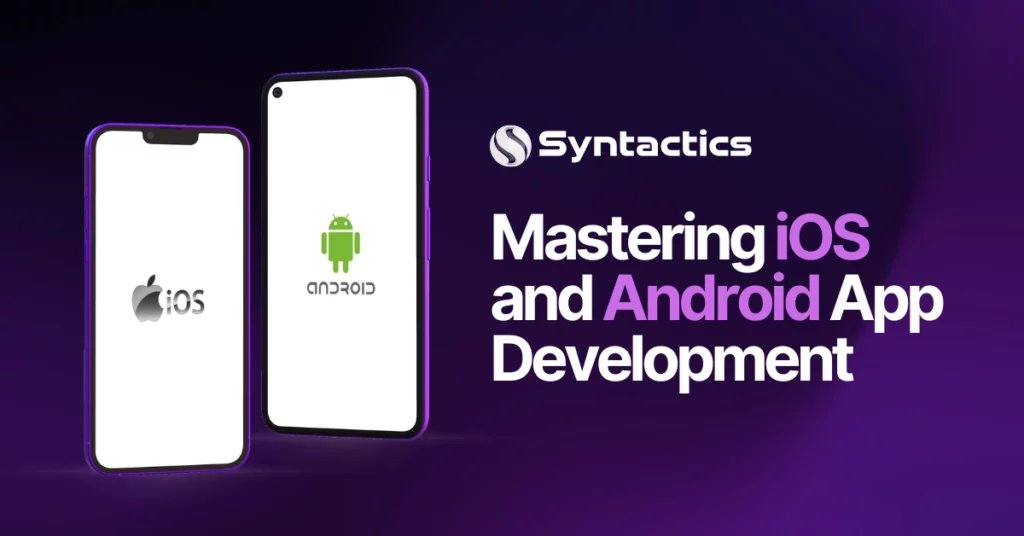
Mastering iOS and Android App Development
Mobile devices have been incredibly popular for the last few years due to their practicality and useability in any if not most, day-to-day work. Exploding Topics revealed that over the last five years, the number of smartphone users worldwide increased yearly by at least 5%.
iOS and Android, the two leading mobile platforms, are widely used Operating Systems (OS) for deploying apps. The preference for either can be determined by how many devices within an organization are using these platforms.
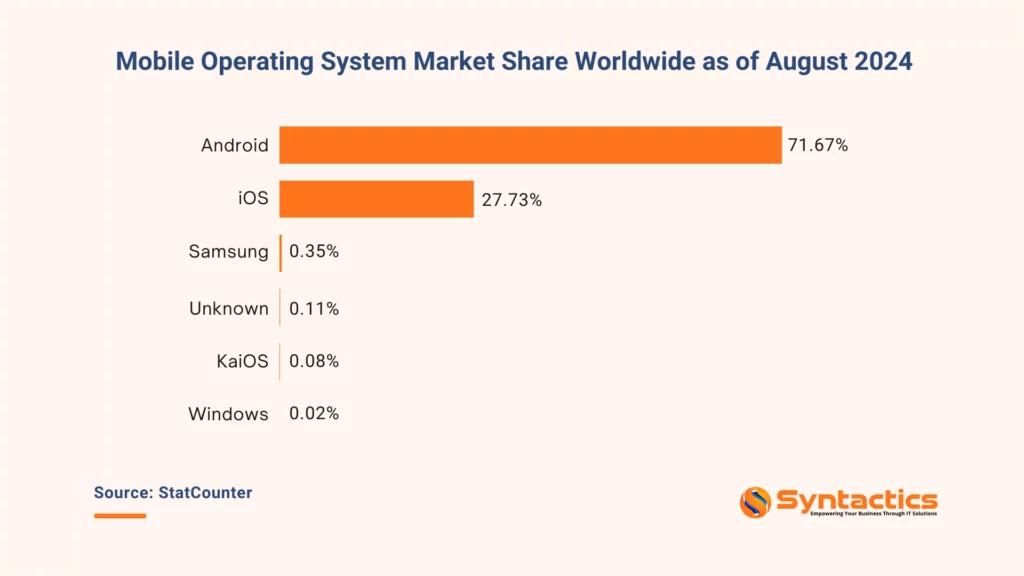
Source: StatCounter.
There are many essential aspects of developing apps for both platforms. Through native and hybrid application development, developers can make a business’ vision into a reality.
Here are the key aspects of iOS and Android mobile app development:
Knowledge of Core Concepts in App Development
A deep understanding of core concepts of app creation is essential for building scalable and maintainable applications.
For both platforms, this includes grasping the following fundamentals:
- User Interface (UI) and User Experience (UX) design;
- The application lifecycle;
- App architecture;
- State management;
- Knowledge of Application Programming Interfaces (APIs);
- Data storage;
- Data management;
- Network communication;
- Performance optimization, etc.
Building User-Centric Experiences
Developers follow mobile app UX best practices to ensure a seamless User Experience.
One way to get information on user preferences is by collecting feedback. According to the Mobile App Feedback 2023 Report, over 85.2% of mobile app professionals said they collect user feedback.
Feedback is critical for understanding how users interact with your app, and developers can make necessary adjustments to enhance the UX.
In addition, you can gain data on user preferences through analytics tools like Google Analytics 4. Heatmaps are another way to gain insights on what app elements your users interact with most and least.
Lastly, developers can also conduct A/B testing to determine which version of the app performs better and make changes accordingly.
Once the business knows what its users want, they may hire a mobile app development company that can design intuitive interfaces for iOS or Android applications.
Of course, conducting beta testing prior to the app’s release can greatly contribute to the quality of the end product. Developers can continue to optimize an app even after its launch with the help of user feedback.
You can examine your Android app’s performance via Google Play Console and the App Store Connect for iOS applications. There, you can utilize insights gained from the respective platforms to refine your app.
Implementing Functionality and Features
Developers leverage platform-specific Software Development Kits (SDKs) and libraries when implementing functionality and features. This stage of app development involves the following:
- Coding the core logic;
- Integrating APIs;
- Handling user input;
- Integrating third-party services;
- Managing data;
- Thorough testing and debugging, and
- Ensuring smooth interactions between different parts of the app.
Testing and Debugging
Thorough testing and debugging are critical to ensure iOS and Android apps’ smooth performance on various devices. Fortunately, both Xcode and Android Studio respectively offer robust testing frameworks and tools. The following tests allow developers to identify and fix bugs:
- Unit tests;
- Integration tests, and
- UI tests.
Additionally, iOS and Android mobile rely on emulators and real device testing to check different screen sizes, resolutions, and hardware configurations.
These tools allow mobile app developers to identify and fix concerns early. As a result, they can create a reliable, high-quality iOS or Android app that offers a seamless User Experience.
Publishing and Distribution
After development and testing, you can publish your app. The publishing stage is the crucial final step where your hard work becomes accessible to users. iOS and Android apps will be submitted to their respective stores.
Developed apps must comply with the store guidelines to avoid rejection or suspension. For iOS applications, developers follow Apple’s App Store Review Guidelines. For Android, developers should adhere to Google Play’s Developer Program Policies.
Promotion is a critical part of the distribution process. App Store Optimization (ASO) significantly improves your iOS or Android mobile app’s visibility and increases downloads. Consider integrating relevant keywords into titles and descriptions for greater visibility on search results pages.
Another way to market your app is to use social media platforms. You can also reach out to the press or influencers related to your industry to boost exposure for your app.
Optimizing App Performance and User Engagement
After the launch, developers must continue to optimize the app’s performance to boost user engagement. They can rely on monitoring tools such as Firebase for Android and Apple’s Analytics for iOS, which are vital for tracking user behavior and app performance.
Here are ways an iOS and Android mobile app development company can optimize an application’s performance:
- Following efficient coding practices (Objective-C and Swift for iOS, Java and Kotlin for Android);
- Ensuring efficient memory management;
- Optimizing UI performance;
- Ensuring efficient network performance;
- Releasing frequent updates to fix any concerns;
- Collect user feedback to improve the app;
- Regularly checking analytics to track user behavior and identify areas for improvement;
- Ensure user security and data privacy, etc.
Also, incorporating personalization and gamification into the app can significantly increase user engagement.
Understanding Hybrid App Development for iOS and Android
Hybrid application development is a popular app-building approach that runs on multiple platforms but with a single codebase. As its name suggests, this method combines elements of native and web app development.
It has several advantages that make it appealing to businesses, including:
- Cost efficiency;
- Faster development cycles;
- Access to device features;
- Faster time to market, and
- Easier maintenance.
Of course, hybrid mobile applications, which have elements of both native and web apps, are built using the following technologies:
- HTML;
- CSS, and
- JavaScript.
Thus, they can be installed on devices much like a native app. Here are some key aspects of hybrid application development:
App Performance Optimization
These days, users expect fast and responsive applications, meaning that performance is critical to your app’s success. Any delays in app performance, such as with load speed, lead to user dissatisfaction.
Hybrid app development calls for efficient coding practices. Here’s a list of essential performance optimization practices that mobile app developers utilize when creating apps:
- Limiting WebView usage;
- Optimizing images, fonts, and assets;
- Lazy loading and caching;
- Minimize heavy animations;
- Leveraging Native UI components and plugins;
- Enable hardware acceleration;
- Minimize HTTP requests;
- Code minification and compression;
- Asynchronous programming;
- Memory management, etc.
A Consistent UX
It’s vital to deliver a consistent and intuitive experience across platforms. Hybrid applications are meant to share a codebase, so a mobile app development agency will tailor UI components to match a given platform’s design language.
Developers utilize a variety of strategies to maintain app speed and performance. This results in a native-like experience regardless of device, ensuring app users can feel at home.
By following responsive design principles, developers ensure that the mobile app provides a consistent user experience. The app layout adapts seamlessly to various device screens and orientations.
Secondly, app developers follow platform-specific design guidelines and standards. For instance, Apple iOS has the Human Interface Guidelines, while Google Android has the Material Design principles.
Here are more ways to ensure a consistent app user experience:
- Keep branding elements (colors, fonts, logos, etc.) consistent throughout the app to reinforce your business’ brand identity.
- Implement flexible grid systems to adjust the content layout based on the device’s screen size and orientation.
- Utilize CSS media queries.
- Use Scalable Vector Graphics (SVG) for icons and graphics to ensure they scale correctly on different resolutions without losing quality.
- Ensure intuitive app navigation.
- Implement accessibility features (support for screen readers, color contrast, and enabling navigation through voice or gestures).
- Incorporate commonly-accepted touch gestures.
- Provide immediate feedback for user actions.
Testing and Debugging
Testing is a critical component of hybrid app development to identify and fix any issues within the application.
The following are the most popular testing types for mobile applications:
- Cross-Platform Testing ensures that the hybrid app works on both iOS and Android platforms.
- Automated Testing utilizes tools like Appium and Selenium to detect bugs, especially early in the development process.
- User Acceptance Testing (UAT) aims to gather feedback from real users concerning usability issues and performance bottlenecks to ensure the application meets expectations.
- Comprehensive Testing is where Quality Assurance specialists comprehensively test the app on multiple devices to identify platform-specific issues.
Afterward, developers will use debugging tools to remedy the concerns found by app QA testers. Your app can function seamlessly across platforms and devices.
Plugin Management
Plugins provide access to native device features, extending hybrid app functionality.
An app development agency will take care to select plugins that are well-maintained and actively supported. This prevents compatibility issues and security vulnerabilities. It’s also vital to track your plugins and check for updates often.
Here are the criteria for selecting plugins:
- Evaluate the plugin’s quality — ensure that it’s well-documented, regularly-maintained, and has positive feedback or reviews.
- Ensure that they’re compatible with your development framework and desired platforms.
- Select plugins with minimal dependencies to reduce complexity and potential conflicts.
However, in some cases, a developer may need to craft custom plugins to meet the app’s requirements.
Performance Monitoring
Real-time monitoring allows you to track your app’s performance via the following metrics:
- App launch time;
- Load times;
- Response times;
- Resource usage;
- User engagement;
- Responsiveness;
- Error rates;
- Crash reports, etc.
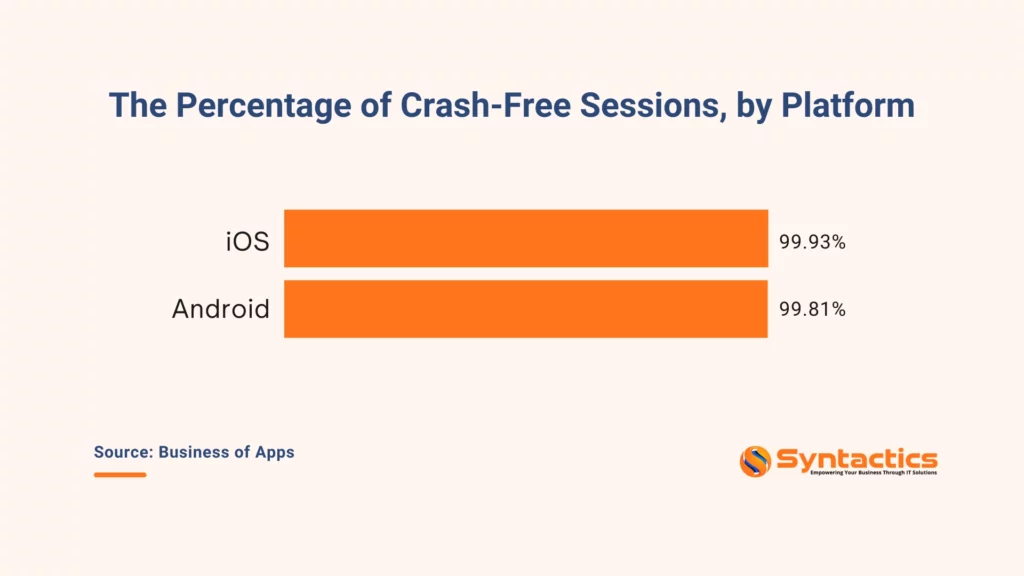
Source: Business of Apps.
You can use the performance data gained to proactively address app concerns. Consider integrating a feedback form to get user insights concerning the app’s performance and usability!
Mobile app developers can also conduct regular audits to evaluate your mobile app’s efficiency and then optimize code as needed. Proactive performance monitoring can significantly contribute to a high-quality user experience while improving app quality over time.
Dos in iOS and Android App Development
Securing Mobile Applications
Security is a critical aspect of developing mobile apps since more users are accessing sensitive information through them. It’s becoming increasingly vital to partner with an iOS and Android app development company with experience in protecting user data from malicious attacks.
Protect Your Systems With
Bitdefender Cybersecurity Solutions!
Here are best practices for securing iOS, Android, or hybrid mobile apps.
- Data encryption. Prevent unauthorized access by encrypting sensitive in-transit and at-rest data such as passwords and financial information. The Bitdefender Full Disk Encryption Solution can assist with this.
- Implement robust authentication methods, like Multi-Factor Authentication (MFA), which will allow only legitimate users to access the app.
- Implement regular updates and patches. By continuously updating the app, developers can patch any security vulnerabilities to prevent hackers from exploiting its weaknesses.
- Code obfuscation makes it difficult for malicious individuals to reverse-engineer your mobile app’s code.
- Use trusted and secure Application Programming Interface (APIs) to prevent data breaches or leaks and unauthorized access.
- Be mindful of user permissions. Request only whatever permissions are necessary to reduce security risks.
Speeding Up App Load Time
Fast app load speeds significantly contribute to UX and keep users engaged. Here’s how an iOS and Android development company can ensure your apps load more quickly:
- Optimize your images and media files through compression to reduce load times.
- Write clean and efficient code. Optimized code results in faster app performance. Also, developers can avoid bloating the app via excessive reliance on libraries and unnecessary dependencies.
- Implement caching so data can be stored locally on user devices and not have to be downloaded repeatedly.
- Utilize lazy loading so essential elements load on the first screen. You can defer loading of other content until they’re needed.
- Reduce the app’s server requests by bundling them, preloading particular data, and combining assets.
- Use Content Delivery Networks (CDNs) to distribute app data across multiple locations so users can load your app from a server near them.
Overcoming Common Challenges in Development
Mobile app development comes with its own set of challenges, but they’re not without solutions:
Device fragmentation.
There are a variety of devices, OS, and screen sizes, which makes it challenging to ensure compatibility across all platforms. Professional Quality Assurance specialists can conduct thorough tests to improve cross-platform compatibility.
Battery usage.
Developers can prevent applications from consuming too much battery by optimizing their background processes.
Performance optimization.
Apps may run slowly or crash over time; developers can monitor performance and conduct maintenance as needed.
Data security.
Developers can implement encryption and authentication methods and conduct security audits to protect data from unauthorized access.
App Store approval.
Getting approval from the App Store or Google Play can be challenging, so app development companies should thoroughly review and follow the appropriate guidelines.
User retention.
Strong user retention rates can be achieved by prioritizing user-friendly design, exciting features and elements, and appropriately timed push notifications.
Future Trends and Innovations
The future of mobile app development promises numerous advancements, such as the following:
- Artificial Intelligence (AI) and Machine Learning (ML);
- Augmented Reality (AR) and Virtual Reality (VR);
- 5G technology;
- Cross-platform development frameworks like Flutter and React Native;
- Blockchain technology;
- Internet of Things (IoT);
- Wearable technology;
- Progressive Web Apps (PWAs);
- Cloud integration;
- Enhanced security features, etc.
Conclusion
Understanding iOS and Android is critical for mastering app development. Each Operating System has unique features, development environments, languages, and distribution methods. A mobile app development company from the Philippines leverages the strength of both platforms to create useful applications that provide seamless experiences.
But overall, successful applications are defined by the following:
- Core app development concepts;
- Intuitive interfaces;
- User-centric experiences;
- Accessibility, and
- Improvements based on user feedback.
FAQs on Mobile App Development
How do I choose an iOS app development company?
Here are some steps to follow when choosing a development company:
- Review their portfolio
- Check their experience
- Read client reviews
- Evaluate their communication and project management processes
- Compare pricing models
- Assess their technical capabilities
- Consider their post-launch support services
What is the best Android app builder?
The best app builder will depend on your specific needs and skill level, but popular options include Appy Pie, GoodBarber, and Adalo. Apps with more complex features or functionality often require partnerships with a professional development company.
How much does app development cost?
It can vary widely based on factors like the app’s complexity, technology stack, and the development team’s location. Ongoing maintenance and updates will incur additional costs over time.
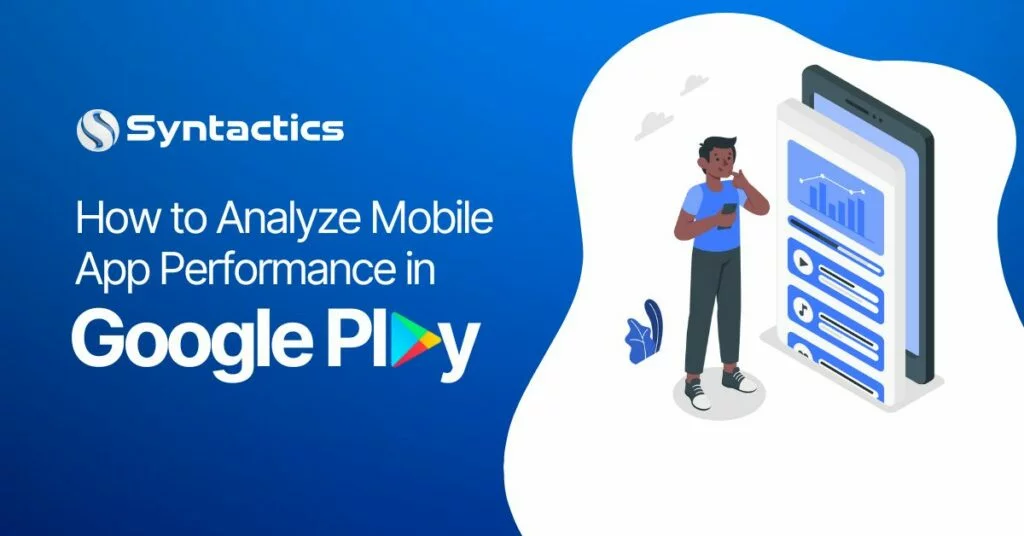










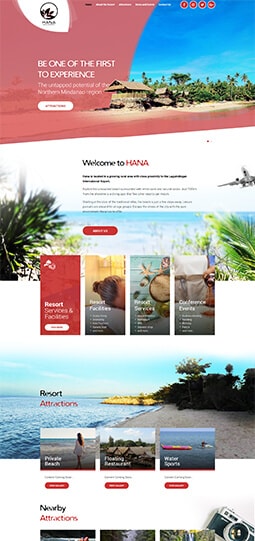
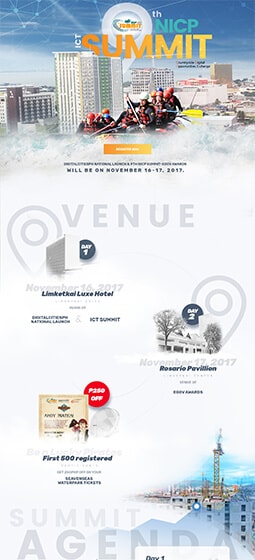

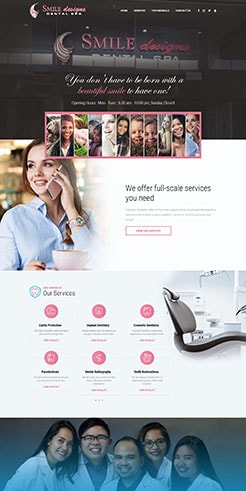


Comment 0